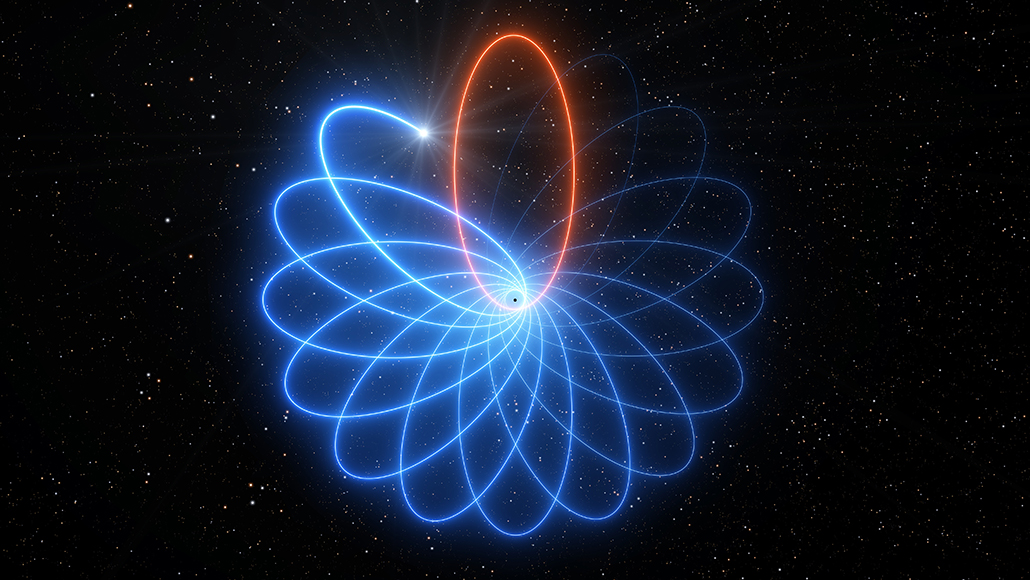A star orbiting the Milky Way’s giant black hole confirms Einstein was right
Decades of observations revealed the rotation of the star’s elliptical orbit

A star's rosette-shaped path around a black hole confirms Einstein's theory of gravity. Rather than tracing out a single ellipse (red), its orbit rotates over time (blue, rotation exaggerated in this illustration for emphasis).
L. Calçada/ESO